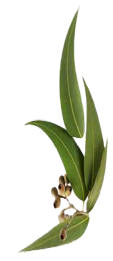I told her what an idiot I had been and she suggested it was crop burn not a punctured neck. They operated, charged us a fortune, told us the prognosis was not good and asked us to get care from an avian vet. Elmo's avian vet was sick (we had not met him at that time) so we took him to another avian vet. He assured us the bird would be OK, that he had seen a lot of this and suggested the crop damage was due to an infection of some kind. He had repaired a lot of Ekkies crops.
A few days after the surgery we received a call from the breeder telling us Elmo’s brother had tested for psittacosis so we should take him to the same vet who was treating his brother, coincidently the vet we had tried to see after Elmo’s surgery. As Elmo’s brother had tested positive, the vet treated Elmo for psittacosis which involved 6 weeks of injections. We told him about Elmo’s surgery. The vet suggested crop burn and stated that he liked to wait before performing surgery to give time for the flesh to stop dying so all the dead flesh could be removed. We expressed some confusion about the burn as we had been very careful with the feeding, and he suggested it can be days before anything is noticed. This gelled with what the first vet had said as the food had been retained by the neck muscle.
Three days later we were back with the vet as Elmo’s crop had burst again. The vet did the surgery, made sure all dead flesh was cut out this time and only charged us a fraction of what the first vet had charged. They assured us Elmo would get over the surgery.
Elmo recovered, he had almost completed his injections and I assumed he was no longer infectious. We noticed that Elmo’s breeder now had a baby hen. We felt we had learned our lesson with Elmo, and went down with Elmo on our shoulder and purchased Rani.
A week after buying Rani, Elmo’s droppings had turned yellow and we rushed him to his vet. He took him in overnight, hydrated him, did the tests and told us Elmo had liver failure (hepatitis), gave us the drugs and only charged us $150. We took him home, kept him warm, hand fed him lots of formula and he recovered. The vet suggested that the two lots of surgery and his psittacosis had contributed to his illness.
Immediately after getting Elmo well, about 2 weeks after buying Rani, she was looking very bad and her droppings were yellow. She died that morning in the vet’s office from liver failure brought on by psittacosis. We told him the breeder told us she had the bird tested for psittacosis. The vet suggested a scenario could be painted that she ate bird droppings but it was impossible to know where the infection had come from. We rang the breeder and she told us she would replace the bird. A week later she rang and hinted that Elmo's vet had told her Rani’s infection come from us. We went back to the vet and asked him why he had given her a different story. Becoming very annoyed at being misrepresented, he told us he had told her nothing of the sort. Her clients had lost several of her birds. The vet told us that he had suggested to her that as her flock was being treated for psittacosis, she should stop breeding for a few months and she should only be selling weaned birds so people could see her birds were OK. He also told us not to add to our flock for a few months.
Wanting another opinion, I rang Doctor Rob Marshall and he arranged to have all our birds tested for psittacosis, Elmo was also tested for Polyomavirus.
All tests came back negative which would also suggest that Elmo never had psittacosis as the antibodies were not present. I accept that it was more than reasonable to treat Elmo as his brother tested for psittacosis and the tests are expensive. Doctor Marshall gave us his permission to buy another bird.
A few months later I went to another avian vet with the results and asked if we were foolish in buying another bird as something might be floating around in our house. He told us to go for it. Finally we went back to Elmo's vet for his OK. He made sure we were buying a weaned bird from another breeder and hinted that Bella’s breeder was OK.
We were foolish in buying un-weaned birds. I do not want others to go through this.
Money is not saved as formula is expensive. Bella has proved one does not need to hand raise a baby to have it bond to its new owners. Bella is a very friendly Ekkie with her breeder giving us a healthy 16 week old bird.

